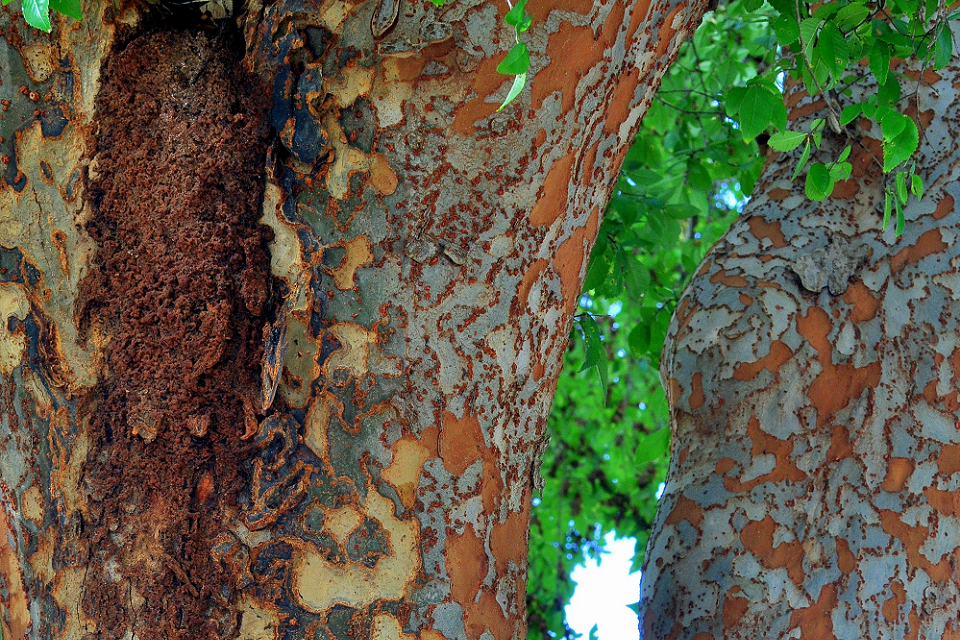
Carol Reese, UT Gardens, Jackson, 731-425-4767
Submitted by Carol Reese, UT Extension Horticulture Specialist, Western Region
No tree is perfect. Some have lots of issues and are not considered desirable landscape plants. Trees with few issues tend to show up regularly on lists of recommended trees for urban use. Flaws that might not be so noticeable in the typical landscape are going to be obvious when the tree is used on a city street.
Lacebark elm, Ulmus parvifolia, shows up repeatedly on these lists and was chosen as Urban Street Tree of the year in 2003 by the Society of Municipal Arborists. Sometimes you may see this species called Chinese elm, but a concerted effort has been made to change that, since Chinese elm is also a common name for Ulmus pumila, a tree that has little to recommend it. Of course, the Latin name is the best way to ascertain that you are indeed purchasing the correct plant.
Lacebark elms grow rapidly and have small leaves that are less likely to clog drains or create a littered aspect. They are strong-wooded, heat and drought resistant once established, and winter hardy at least to Zone 5.
There is much variation in the genetics and selections have been made for upright, v-shaped growth habits — ideal for trees that will offer shade yet not obstruct pedestrians or drag on the roofs of automobiles. Other cultivar selections offer traits such as dwarf, compact, or variegated forms. Still others are evergreen or semi-evergreen in warmer climes, and some offer burgundy fall color. A clone called ‘Golden Rey’ glows with softly golden foliage.
Perhaps the most remarkable ornamental attribute is the one that characterizes the common name — the beautiful exfoliating bark. In tones of gray, green, orange and cinnamon brown, it is reminiscent of the most colorful crapemyrtle barks, but has more of a lacy textural interest. Some cultivars have richer tones, and some will develop this ornamental attribute when quite young, while others may take several years.
So if no tree is perfect, what is the flaw in lacebark elm? It can reseed vigorously, though this varies by cultivar.
Plant lacebark elm in full sun, and look up first as it will become a medium-to-large tree, 40 feet to 50 feet in height, with a comparable spread. This is dependent on the cultivar, as some have been selected for narrower growth habits. It is adaptable to most any soil, but avoid consistently soggy.
Specimens can be seen in the parking lot at the UT Gardens, Jackson, and the golden form, ‘Golden Rey’ is found at the southeast corner of the building.
Carol Reese is the Western Region Ornamental Horticulture Specialist for University of Tennessee Extension. Her office is located in the West Tennessee AgResearch and Education Center in Jackson. The University of Tennessee Gardens located in Knoxville, Crossville and Jackson are part of the UT Institute of Agriculture. Designated as the official botanical garden for the State of Tennessee, the gardens’ mission is to foster appreciation, education and stewardship of plants through garden displays, educational programs and research trials. The gardens are open during all seasons and free to the public except during designated special events. For more information see utgardens.tennessee.edu
Contact:
Patricia McDaniels, UTIA Marketing and Communications, 615-835-4570